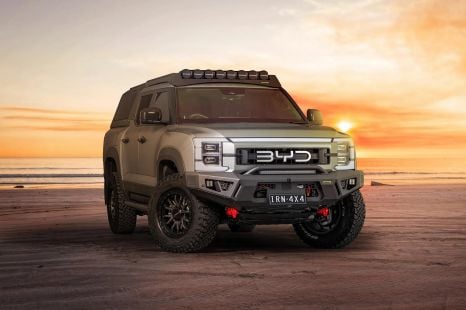

William Stopford
BYD Shark 6 gets higher payload thanks to GVM upgrade
6 Hours Ago
The Hyundai Venue is the brand's most affordable car in Australia, but it's competing at a price point brimming with rivals.
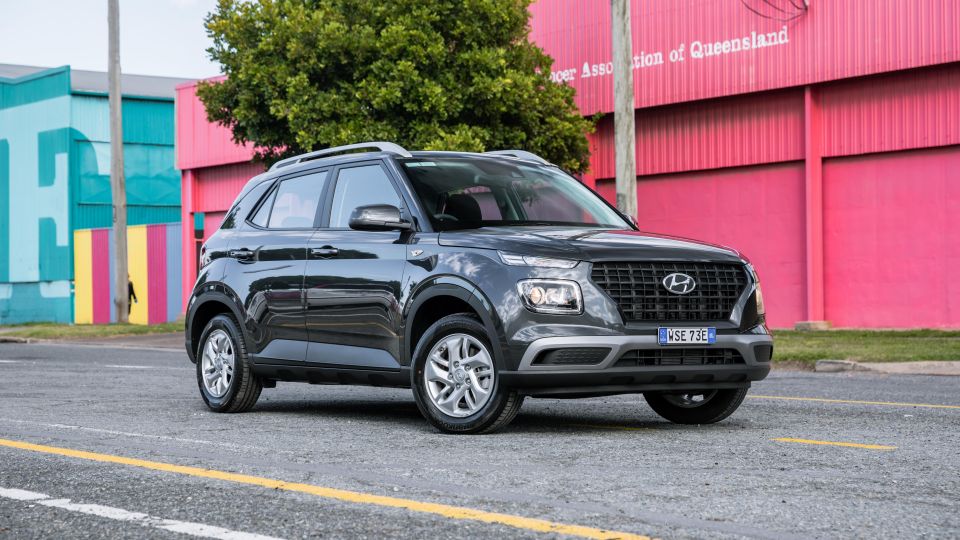


News Editor
New from
$20,690
excl. on-roads

News Editor
New from
$20,690
excl. on-roads


News Editor
New from
$20,690
excl. on-roads

News Editor
New from
$20,690
excl. on-roads
Quickly see how this car stacks up against its competition. Select any benchmark to see more details.
Where expert car reviews meet expert car buying – CarExpert gives you trusted advice, personalised service and real savings on your next new car.
You can’t buy a new Hyundai Accent anymore, at least not in Australia. There’s no i20 except for the $30k+ N model coming soon, and the Getz is long gone.
That leaves the Venue as Hyundai’s entry-level model, with the base model now undercutting an i30 Hatch by around $3000. It even offers a price-leader model with a manual transmission, something that’s increasingly rare in the light and small SUV segments.
It’s arguably one of the more budget-focused light SUV offerings on sale short of the Suzuki Ignis, and is priced up against the MG ZS from China.
The Venue has been around since late 2019 so it’s still pretty fresh, and yet it’s being overtaken by even fresher competition in this burgeoning segment.
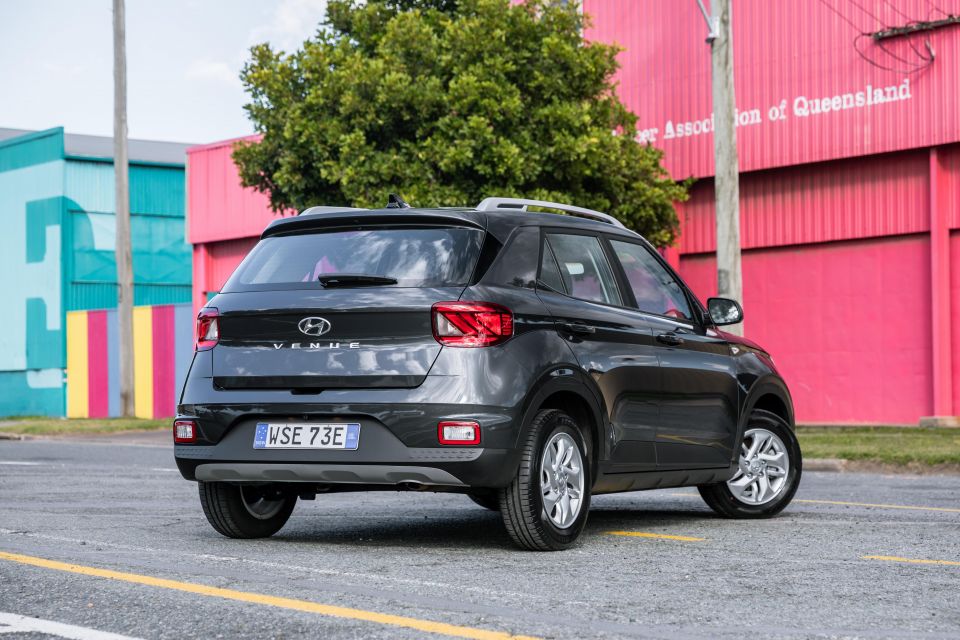
One of those rivals isn’t so new: the Kia Stonic, its corporate cousin that first appeared in Europe in 2017 but only arrived here at the beginning of this year. The Toyota Yaris Cross is another similarly-sized albeit pricier crossover that has edged past the Venue in the sales race, while the Mazda CX-3 remains indefatigable despite its age.
The base Hyundai Venue certainly looks like a base model. While it looks quite natty in top-spec Elite trim with its 17-inch alloy wheels and contrasting roof, the base Venue has 15-inch alloys, which look awfully small in 2021. At least they’re not wheel covers like earlier iterations or in the base Kia Stonic.
The halogen daytime running lights and small wheels aren’t all that surprising for an entry-level light SUV, but the grille really cheapens the Venue’s aesthetics. It looks plasticky, the radiator is in full view, and you can even see a cord running behind it.
It doesn’t help our Venue was in a drab shade of dark grey, further robbing it of the hip, funky aesthetic it delivers elsewhere in the range.
The 2021 Hyundai Venue range opens at $20,940 before on-road costs for the unnamed base model with the standard manual transmission. Adding the auto, like our tester, brings the price to $22,960 before on-roads.
Polar White is the standard colour, with optional metallic shades comprising our tester’s Cosmic Grey, plus Phantom Black, The Denim, Intense Blue, Typhoon Silver and Fiery Red. That’s a pretty standard colour palette nowadays, with the only colours being blue and red. Where are the funky yellow, orange and green shades?
Each of the metallic finishes costs $495, bringing the as-tested price to $27,133 drive-away based on a Sydney postcode.
For context, Hyundai is currently offering the base i30 automatic hatch at $27,490 drive-away.

The Venue is still at the cheaper end of the light SUV segment, with similarly-sized models like the Ford Puma, Nissan Juke, Toyota Yaris Cross and Volkswagen T-Cross starting at $27,000 or so before on-road costs.
That pits the Venue squarely against the related Kia Stonic and the stalwart Mazda CX-3, though these models offer pricier flagship models than the Hyundai. The base Venue used to be priced within a few hundred dollars of the base Hyundai i30, though the company has since increased the pricing of its small hatch.
The Stonic offers sharper drive-away pricing of $24,490 for the base S auto, while even a Sport auto is $26,490 drive-away. The Mazda CX-3’s base Neo Sport trim with optional auto is $24,890 before on-road costs with current drive-away pricing of $26,990. Even the Mitsubishi ASX, in ES auto trim, can be had for $26,240 before on-roads or $27,240 as part of the company’s current drive-away offers.
But there’s also a big, Chinese elephant in the room. While the Koreans once had this part of the market sealed up, the likes of MG and Haval have barged in with some keenly-priced, larger offerings.
The base MG ZST Core is priced at $25,490 drive-away and packs an even larger list of safety equipment, while those more focused on value than safety can get an even cheaper MG ZS. Then there’s the even larger Haval Jolion Premium, also brimming with safety kit, with a range that opens at $25,490 drive-away.
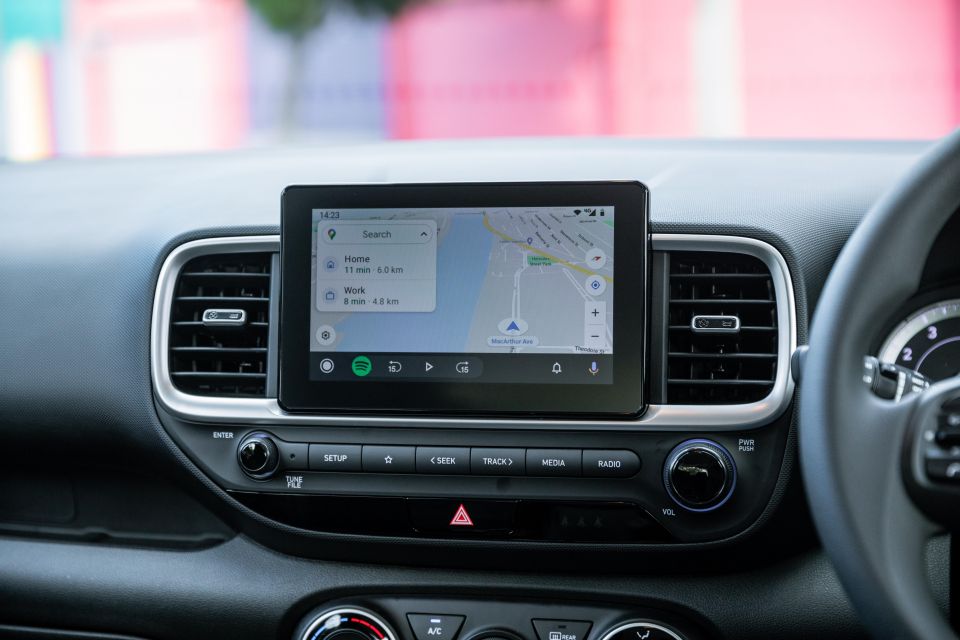

Buy your new car without the stress. It's fast, simple and completely free.

Great service from Travis and team, second time I have used this business would not hesitate to recommend them to anyone
Craig C.
Purchased a Ford Ranger in Sunshine Coast, QLD
CarExpert helped Craig save $7,224 on his Ford Ranger, now let us save you on your next new car.
Get your BEST priceThe base Venue comes standard with the following equipment:
Stepping up to the Active nets you numerous desirable features, like rear parking sensors, static cornering lights, LED daytime running lights, and a leather-wrapped steering wheel.
The Kia Stonic S has a six-speaker sound system and rear parking sensors in its favour, while the Mazda CX-3 Neo Sport includes rear parking sensors and keyless start. The Mitsubishi ASX ES offers a leather-wrapped steering wheel.
It’s the Chinese, unsurprisingly, that win in the value stakes. The Haval Jolion Premium and MG ZST Core have adaptive cruise control, blind-spot monitoring, rear cross-traffic alert, and keyless entry and start, while the MG also adds a surround-view camera and a leather-wrapped steering wheel.
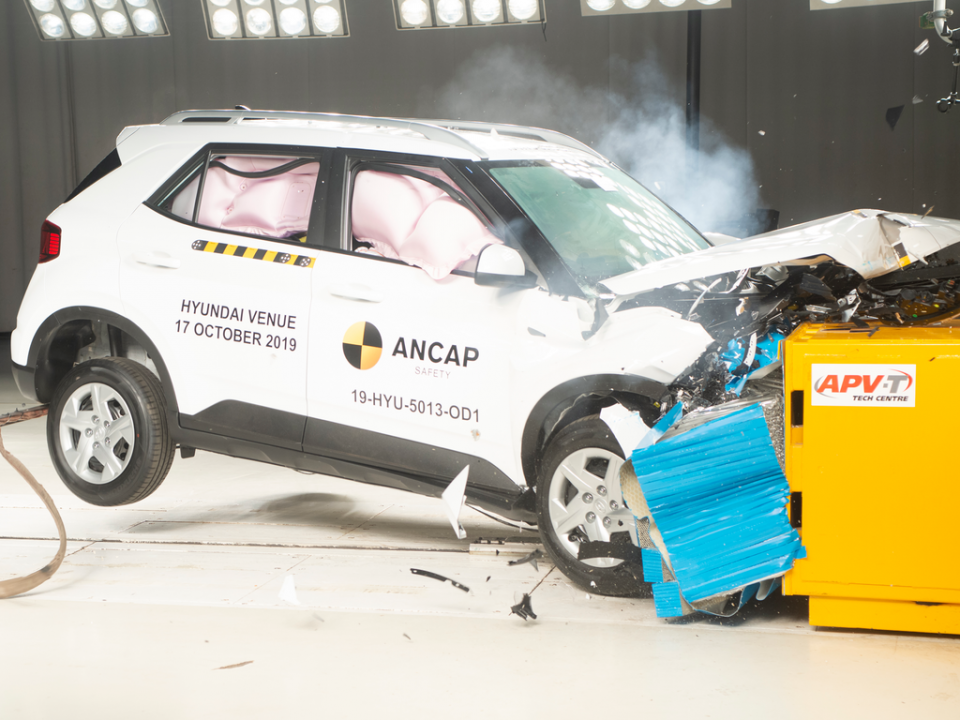
The Venue has a four-star ANCAP safety rating based on tests conducted in 2019.
All models received an adult occupant protection score of 91 per cent, child occupant protection score of 81 per cent, vulnerable road user protection score of 62 per cent and a safety assist score of 62 per cent.
All 2021 Hyundai Venue models feature autonomous emergency braking (AEB) with forward collision warning, lane-keep assist, as well as front, front-side and curtain airbags.
You’ll need to step up to the Elite to get blind-spot monitoring and rear cross-traffic alert.
The Stonic, CX-3 and ASX have five-star ANCAP ratings with older datestamps (2017, 2015 and 2014), while the Jolion is untested and the ZST has a four-star rating based on tests conducted on the older ZS.
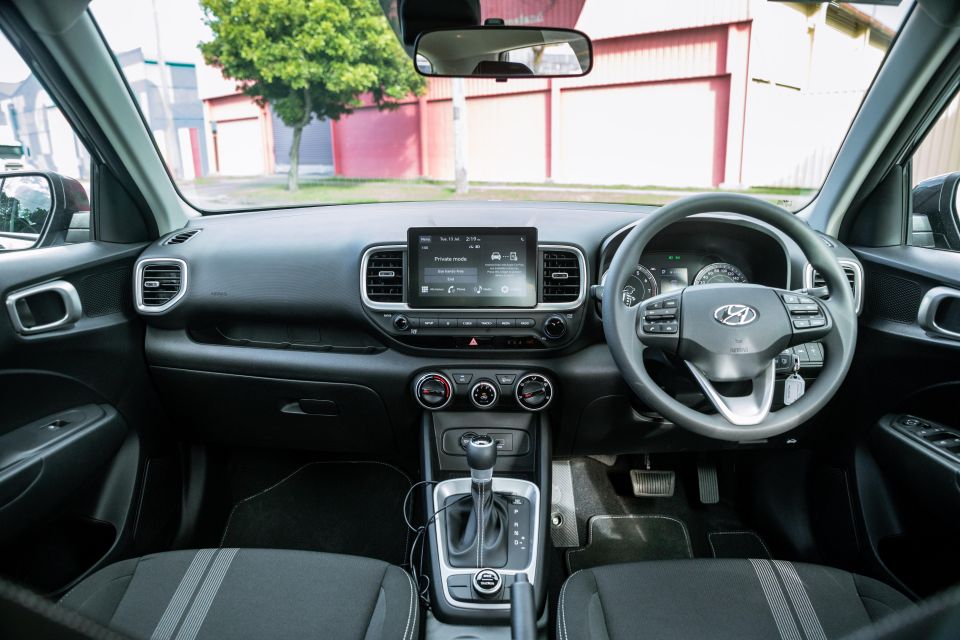
The Venue has a simple, straightforward interior that appears airy and well-screwed together, with the doors closing with a solid thunk. We didn’t encounter any rattles or squeaks during our time with it, though if you press down on the centre of the dashboard the plastic will bow.
You won’t find any soft-touch plastics like in Chinese rivals. Everything is hard to the touch but it’s all rather honest and unpretentious.
The injection-moulded door panels are a bit dreary, though, and the tops are quite sloped so you can’t rest your elbow up high. The urethane steering wheel will also have you going straight from the Hyundai dealer to Supercheap Auto for a cover.
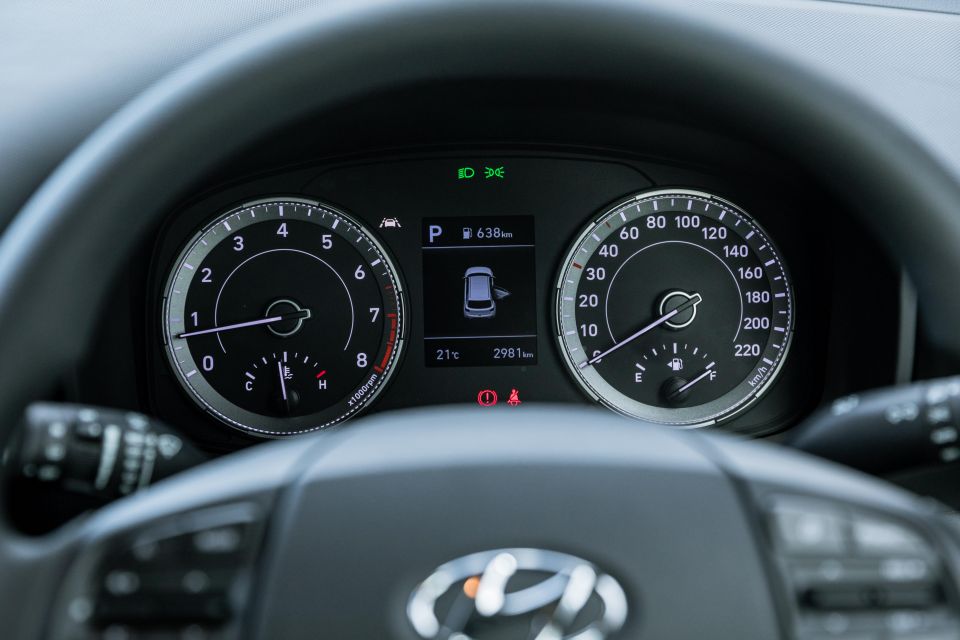
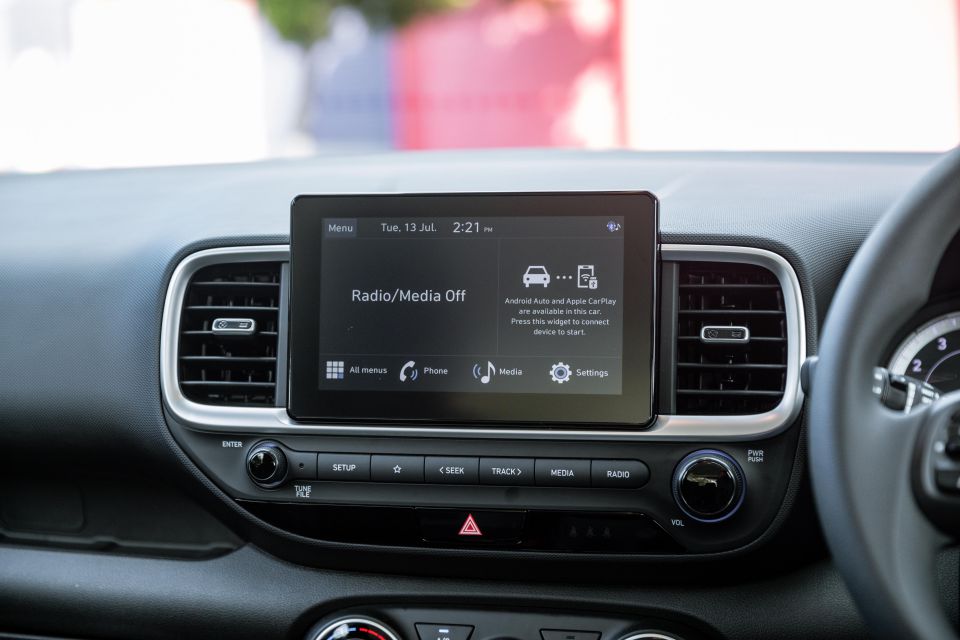
More attractive and pleasing to the touch are the comfortable cloth seats. These have white stitching elements which, combined with the silver accents on the dash, help stop the cabin from being too sombre.
The information screen in the instrument cluster may only be a 3.5-inch monochromatic unit, but the analogue gauges are attractive and legible. The centre stack has a nice, neat layout, while at the base you’ll find USB and 12V outlets.
The Venue’s infotainment system mightn’t have the flashiest graphics but it’s intuitive and responsive, and ultimately works better than those in the likes of the CX-3, ASX, ZST and Jolion. We didn’t experience any issues with wireless Android Auto, either.
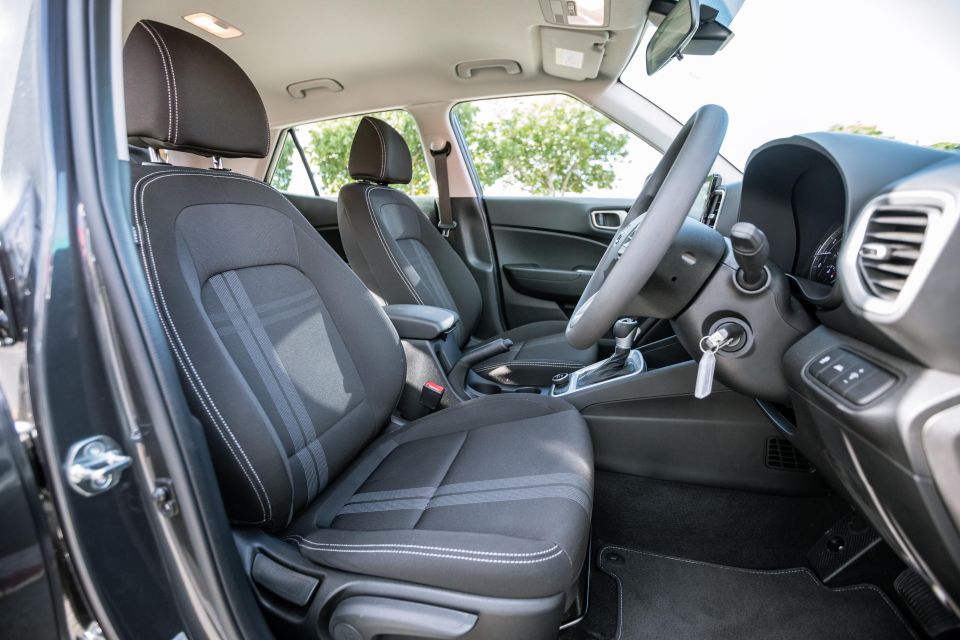
In terms of storage, there’s a phone shelf at the base of the centre stack, two cupholders, and a centre console bin with a padded lid. The latter isn’t a given in this segment – the Toyota Yaris Cross, for example, doesn’t have one.
The little ledge on the passenger side of the dash is a sensible place to put your phone but, unlike the same design element in the larger Santa Fe, there’s no rubberised material to keep objects in place.
It might be a boxy, upright-looking thing, but watch your head stepping into the back of the Venue. Once you’re inside, though, there’s a surprising amount of room for something 300mm shorter than an i30 Hatch at just 4040mm long.
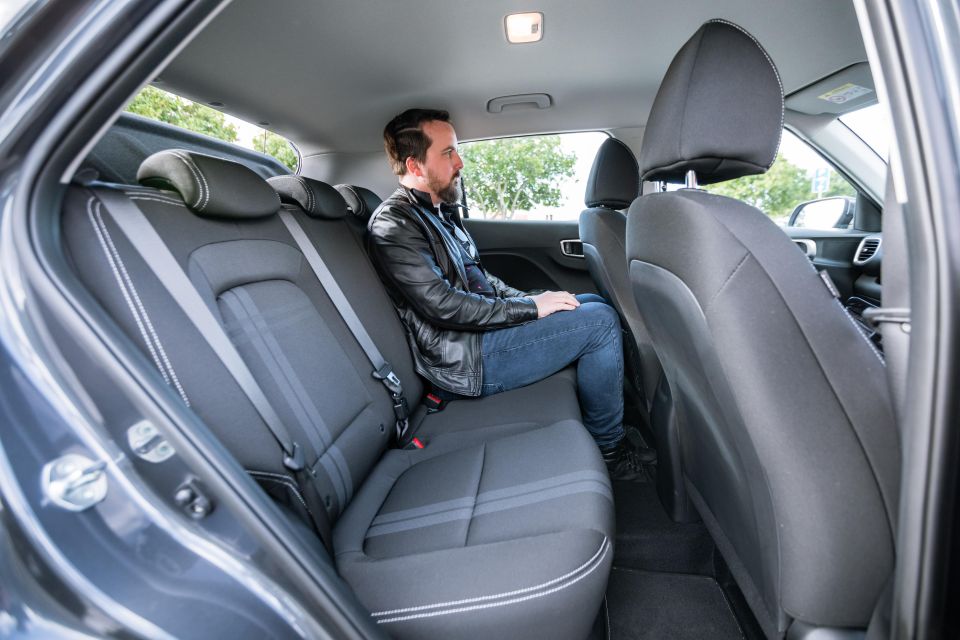
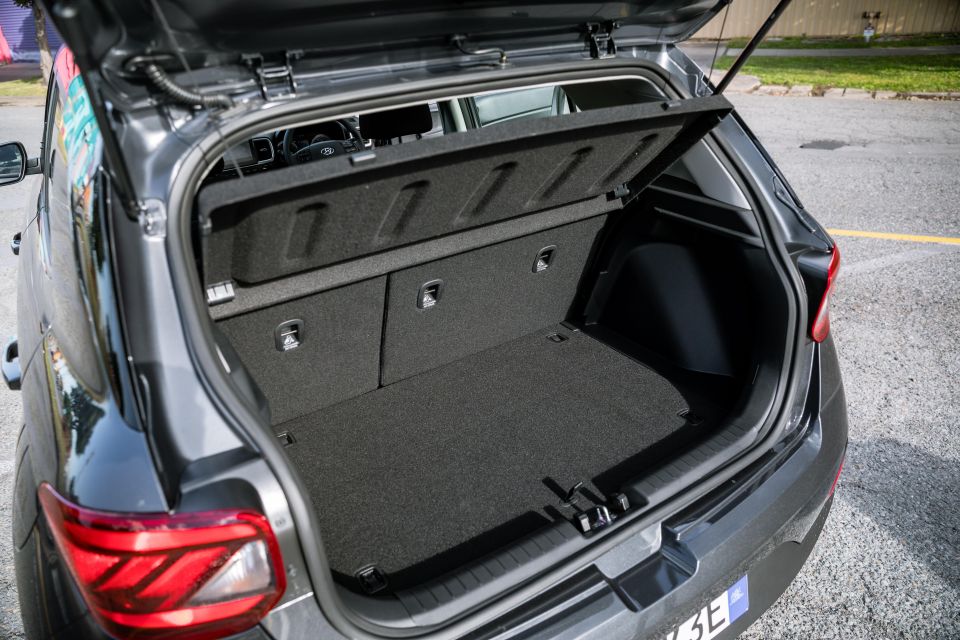
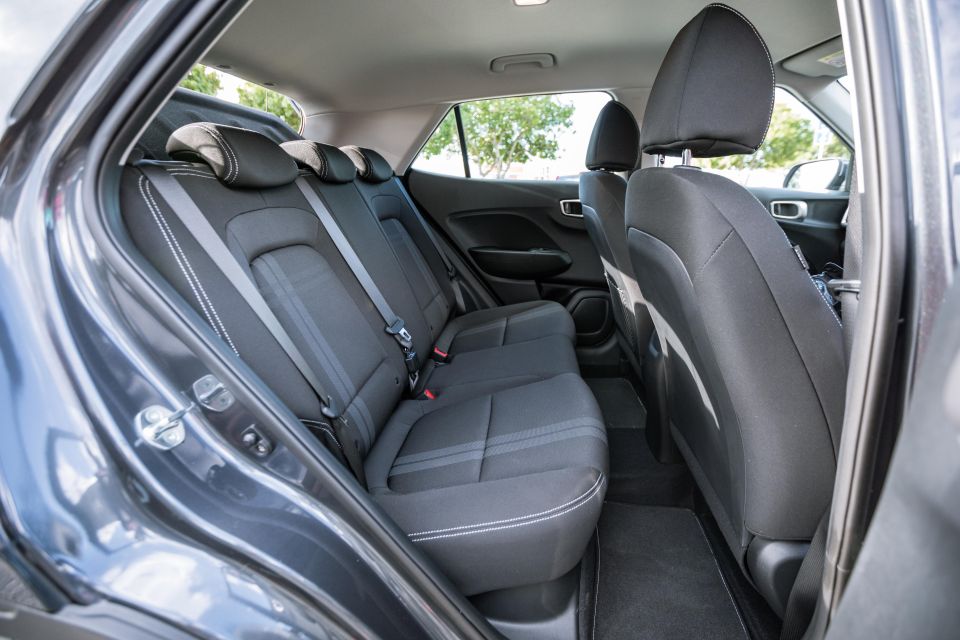
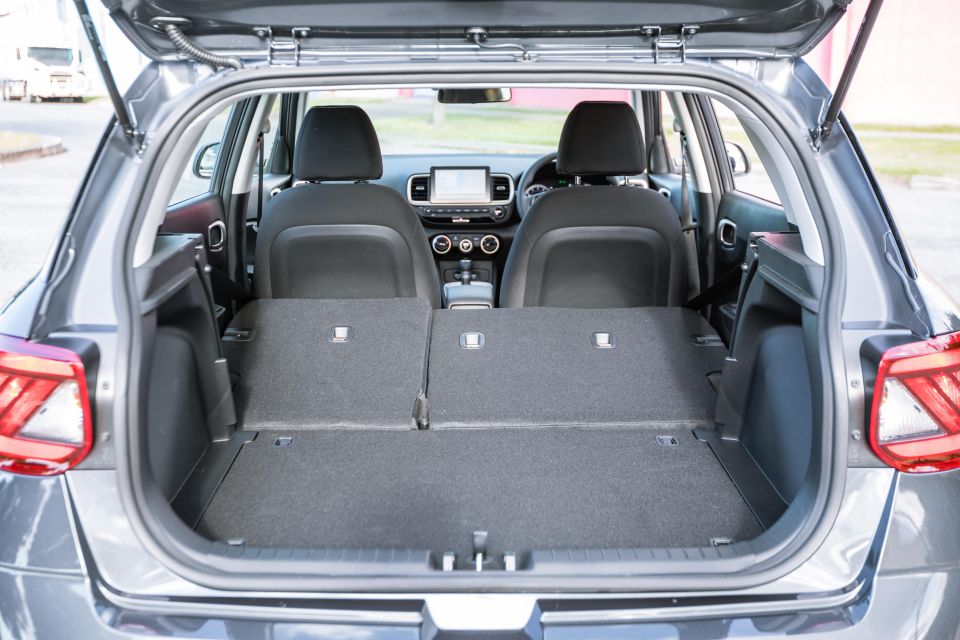
There’s plenty of headroom and somebody around 180cm tall can sit behind a similarly-sized front-seat occupant and enjoy a good amount of head, knee and toe room. The rear bench is a bit firm, however.
You’ll find three top-tether and two ISOFIX anchors for child seats in the second row though there are no amenities short of a map pocket on one of the hard front seatbacks and bottle holders in each of the doors.
Open the tailgate and you’ll find 355L of boot space. That lines up with the likes of the ZST, Stonic and ASX, and bests the Mazda CX-3’s boot by 91L.
The boot has some depth to it, and you can narrowly fit two large suitcases either lying down or on their sides provided they’re not too full. Drop the rear seats and you can narrowly fit a mountain bike in if the front passenger seat is moved all the way forward.
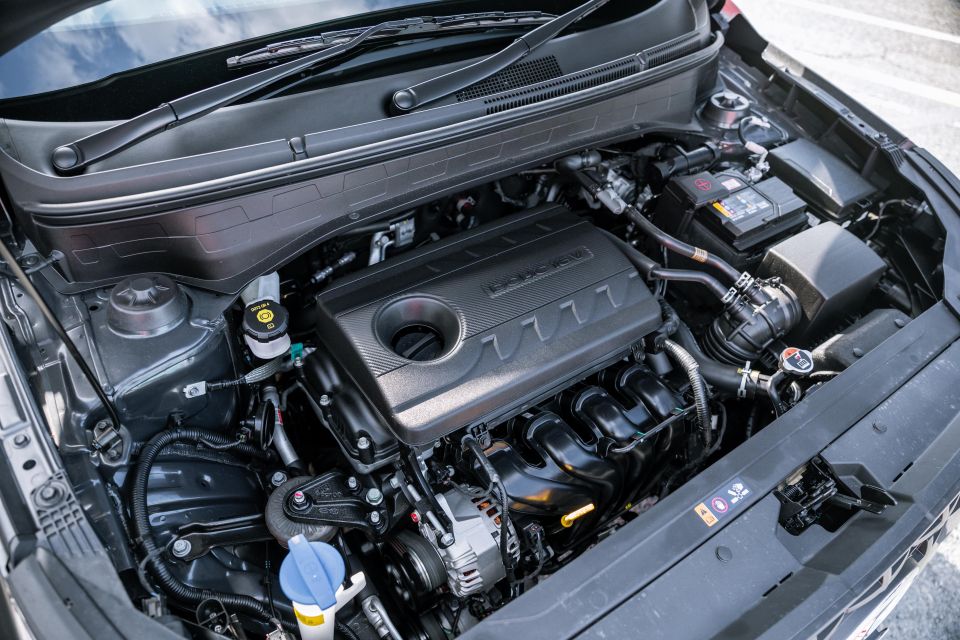
Every Venue is powered by a naturally-aspirated 1.6-litre four-cylinder engine producing 90kW of power and 151Nm of torque.
There’s a choice of six-speed manual or six-speed automatic transmissions on the base and Active variants, with the flagship Elite coming only as an auto.
Those outputs make it sprightlier than the Kia Stonic S and Sport (74kW/133Nm) and the 100kg heavier MG ZST Core (84kW/150Nm), but put it behind the likes of the Mazda CX-3 Neo Sport (110kW/195Nm) and Haval Jolion Premium (110kW/210Nm).
There’s one noticeable bit of cost-cutting under the bonnet: there’s no foam grip on the prop rod.
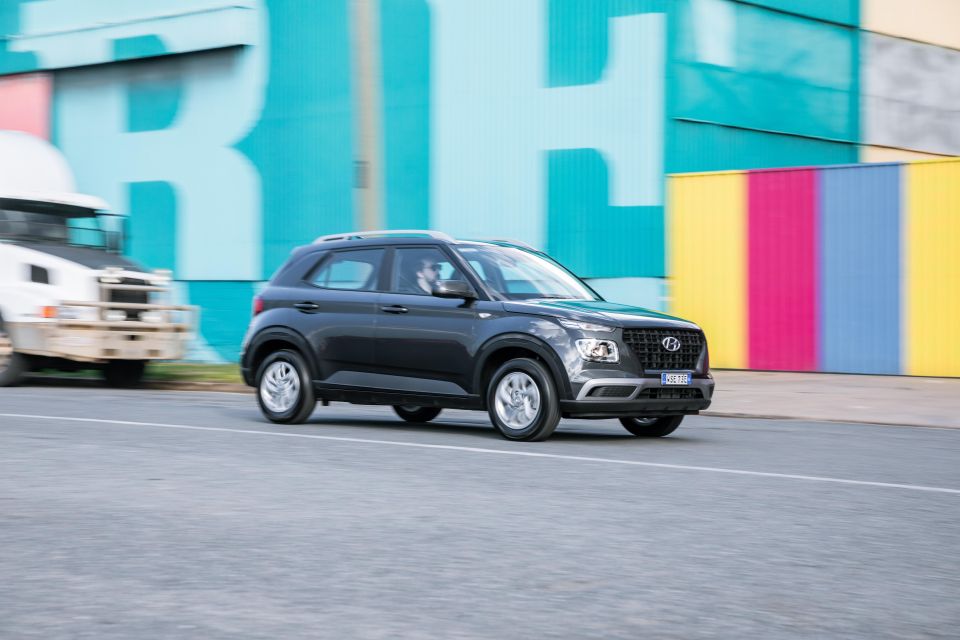
Do you remember in the movie Speed how they couldn’t let the bus go over 55mph?
In the Venue, you can’t let it go above 3000rpm. No, Dennis Hopper hasn’t planted a bomb in it, but it makes an awful racket if you rev it that high.
Drive more sensibly and this is an inoffensive engine for the most part, with a six-speed automatic that does quite well with what it has to work with.
This powertrain is certainly a lot peppier than the dreary 1.4-litre in the Kia Stonic and doesn’t need to be worked anywhere near as hard. Previous testing shows the Venue can hit 100km/h in around 10.5 seconds, compared to 12.5 seconds in the Stonic.
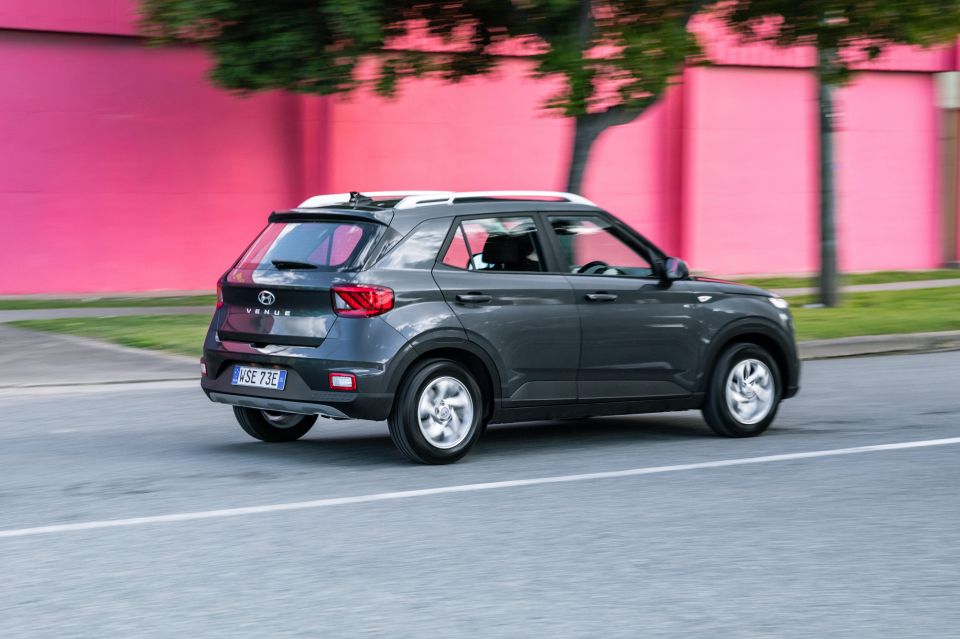
Still, this is a gruff little motor and it practically sounds like a diesel sometimes, particularly when you’re labouring up a hill.
Light steering makes this easy to park and manoeuvre in urban environments, but it never weighs up and thus feels perennially vague.
While the larger Kona has a consistently firm ride, the Venue is more pliant. Larger bumps, however, will shudder through the structure, belying its low price point.
Get on the highway and the cabin gets a bit boomy. Despite its boxy body, the Venue has a decent drag coefficient of 0.34 so we suspect it’s more the lack of sound deadening that’s to blame.
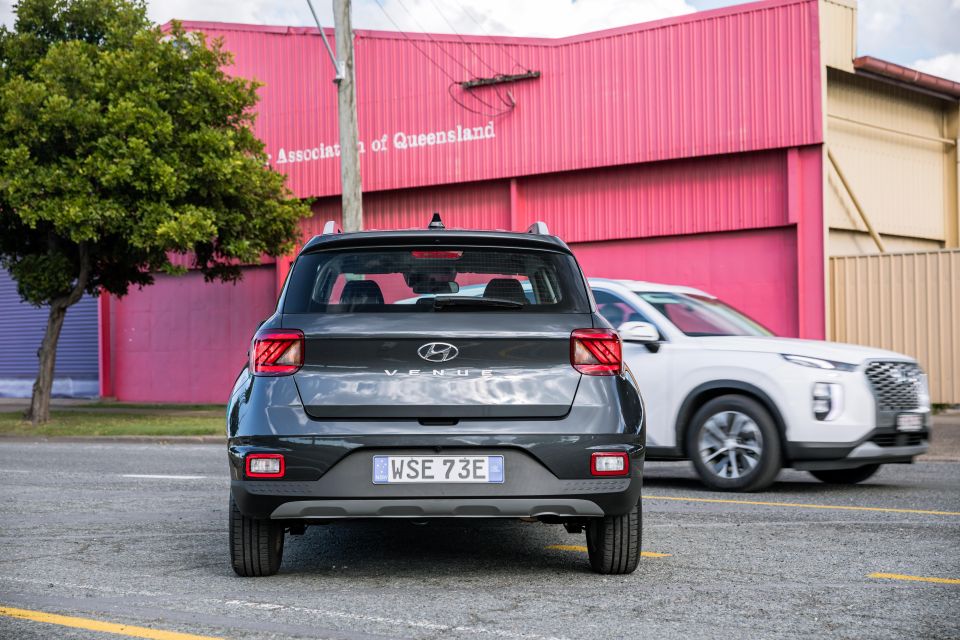
You hardly have to shout if you’re having a conversation, but wind and tyre noise levels could be lower. The wind also whistles a bit around the roof racks.
In terms of handling, there’s plenty of body roll and the overly light steering stops the Venue from being too engaging. It’s a bit top-heavy around corners but avoids feeling sloppy.
The lane-keep assist works well, as expected from a Hyundai product, while we appreciate the presence of a chime that sounds when the car in front of you is taking off.
Though you’re unlikely to be taking a small crossover SUV off-road, especially one that’s only front-wheel drive, Hyundai has included sand, mud and snow traction modes.
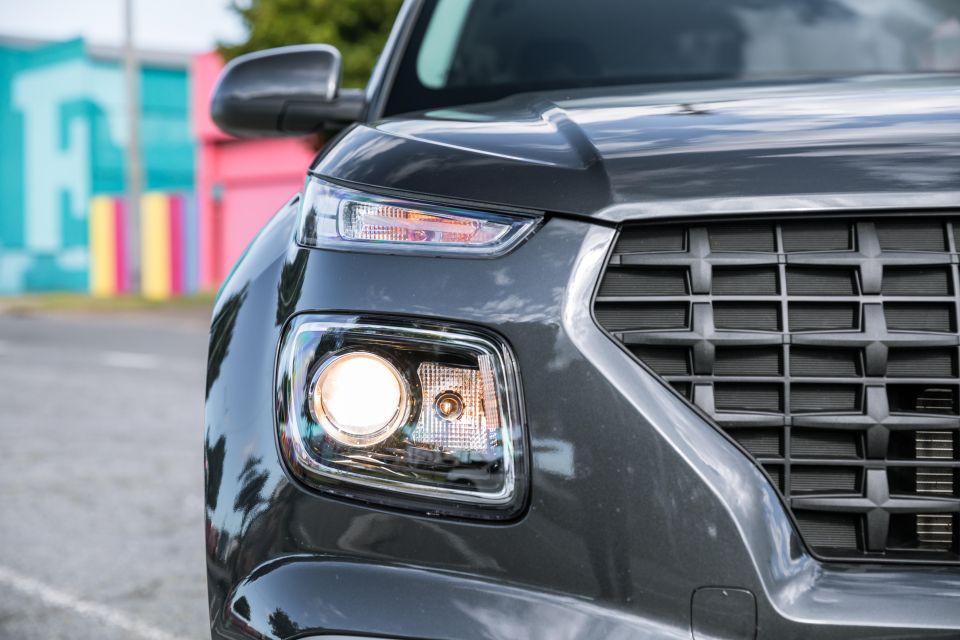
Where expert car reviews meet expert car buying – CarExpert gives you trusted advice, personalised service and real savings on your next new car.
Over a mix of inner-city, suburban and highway driving, we averaged 7.7L/100km. Over the course of a week, this increased to 8.3L/100km. Hyundai advertises a combined 7.2L/100km.
That’s thrifty enough, but over the same test loop we recorded 7.4L/100km for the larger and more powerful 2.0-litre Kona. Unlike its Chinese rivals, the Venue is happy running on 91 RON regular unleaded.
The Venue is covered by a five-year, unlimited-kilometre warranty and requires servicing every 12 months or 15,000km. Rivals Kia and Mitsubishi offer seven- and 10-year warranties respectively.
The first five services are priced at $259, $259, $339, $459 and $295, or a total of $1611 over five years. That’s essentially line-ball with the Haval Jolion and Mitsubishi ASX and slightly cheaper than the Mazda CX-3 ($1770).
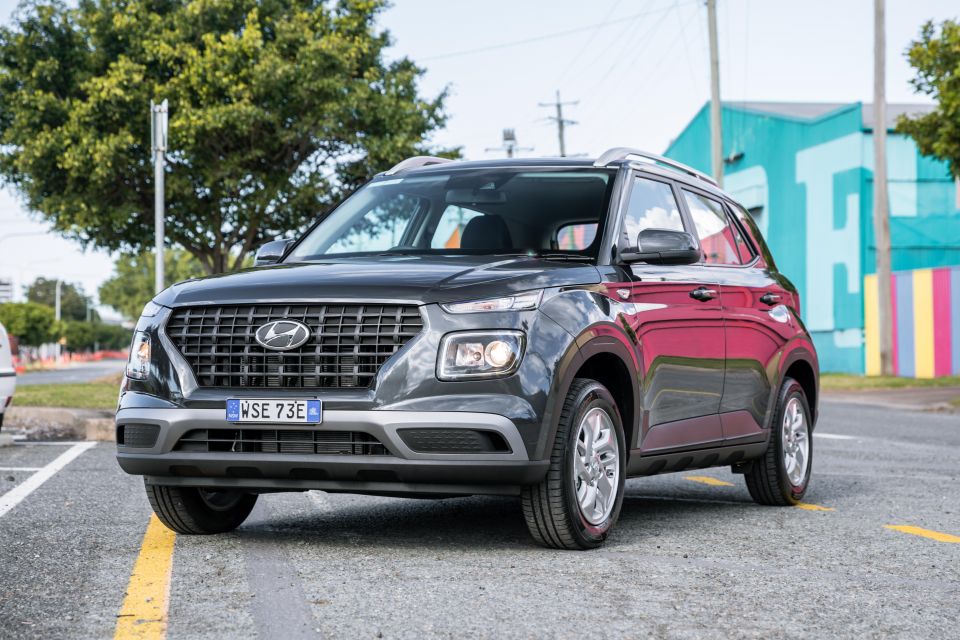
Buy your new car without the stress. It's fast, simple and completely free.

Great service from Travis and team, second time I have used this business would not hesitate to recommend them to anyone
Craig C.
Purchased a Ford Ranger in Sunshine Coast, QLD
CarExpert helped Craig save $7,224 on his Ford Ranger, now let us save you on your next new car.
Get your BEST priceYou’re ostensibly buying a Venue because it looks funky, but in base guise its exterior couldn’t look more cheap.
Unfortunately for the base Venue, it isn’t cheap enough. In-house rival Kia has horned in on this segment with a cut-price light SUV of its own, while there are a pair of Chinese rivals with nicer interiors and longer lists of safety equipment.
Mitsubishi also continues to flog the larger ASX at fire-sale prices while the segment best-seller, the Mazda CX-3, shows no signs of slowing down.
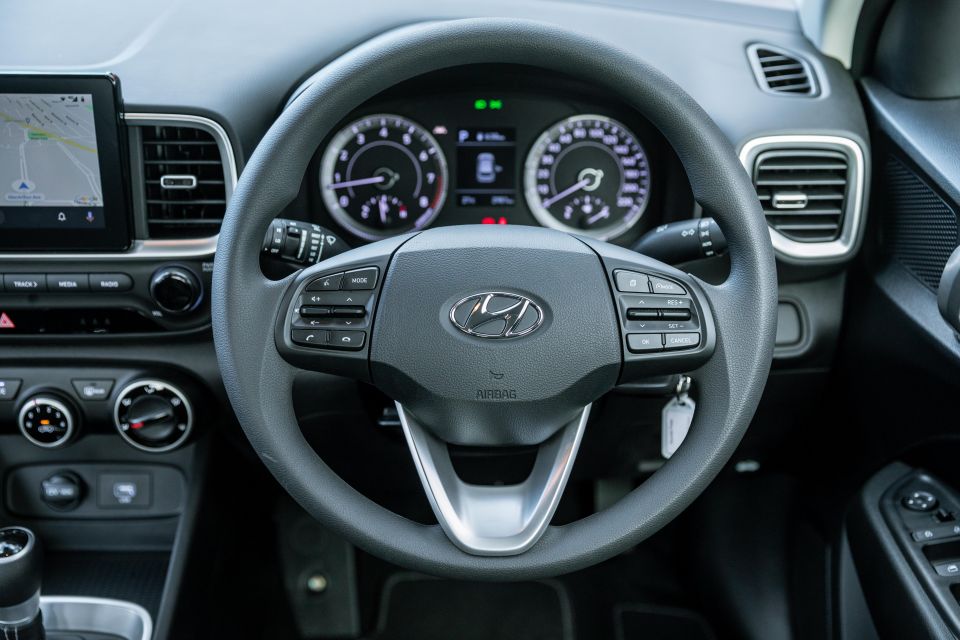
Like all these cars, the Venue is perfectly adequate. In its favour is a smartly laid-out dashboard, a well-packaged interior, a competitive infotainment system and a powertrain that’s fairly peppy and pleasant if you don’t push it too hard.
Buyers at this end of the market are more price-conscious, however. And the Venue isn’t the most well-equipped crossover at this $25-27,000 price point, nor does it have the nicest interior, the most powerful engine, the longest warranty or the comeliest exterior.
It does, however, do enough things well enough to remain a contender.

Click the images for the full gallery
MORE: Everything Hyundai Venue
Where expert car reviews meet expert car buying – CarExpert gives you trusted advice, personalised service and real savings on your next new car.
William Stopford is an automotive journalist with a passion for mainstream cars, automotive history and overseas auto markets.


William Stopford
6 Hours Ago
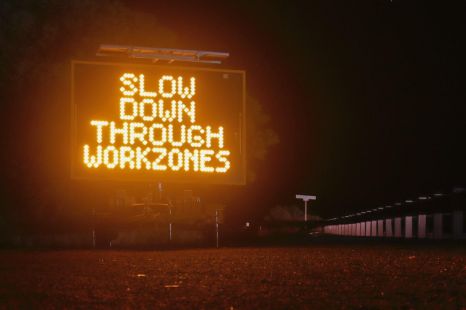

Ben Zachariah
9 Hours Ago
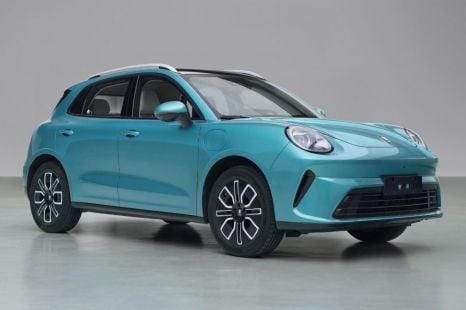

William Stopford
9 Hours Ago
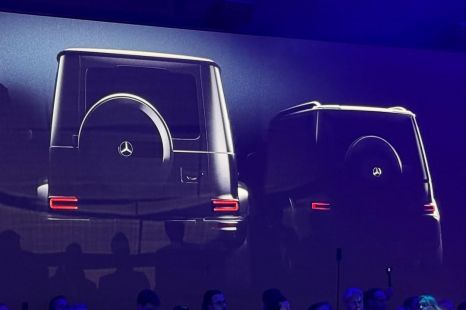

Ben Zachariah
11 Hours Ago


Damion Smy
11 Hours Ago


Ben Zachariah
11 Hours Ago